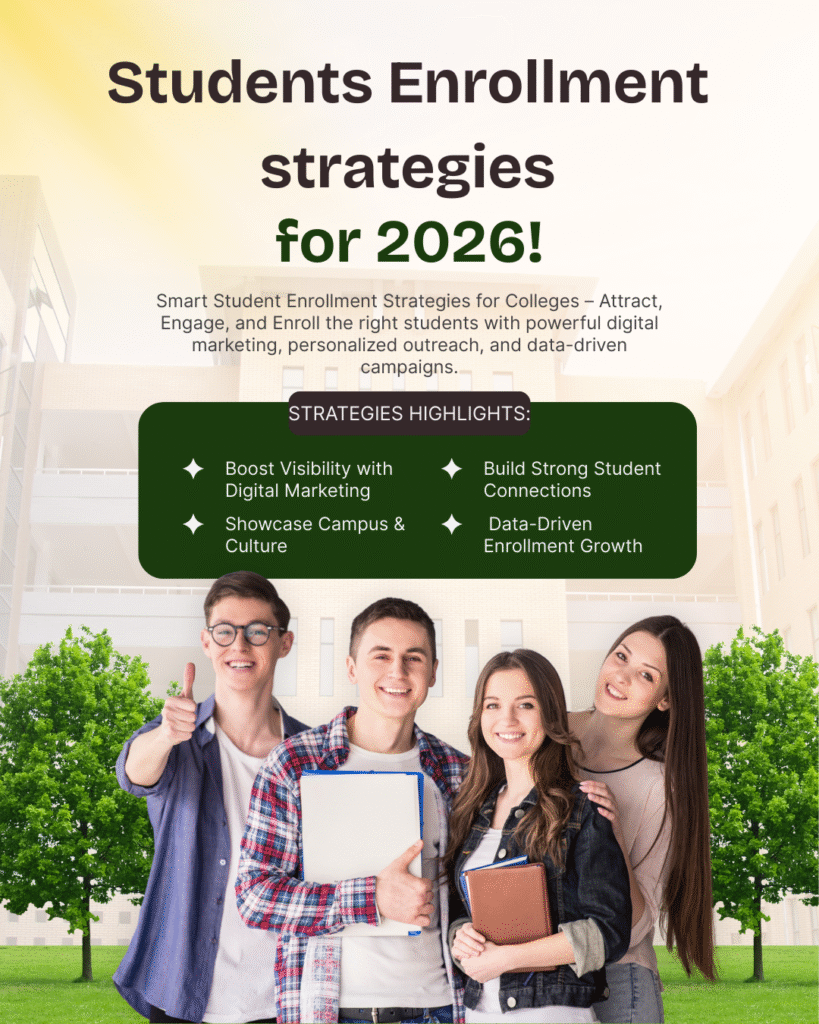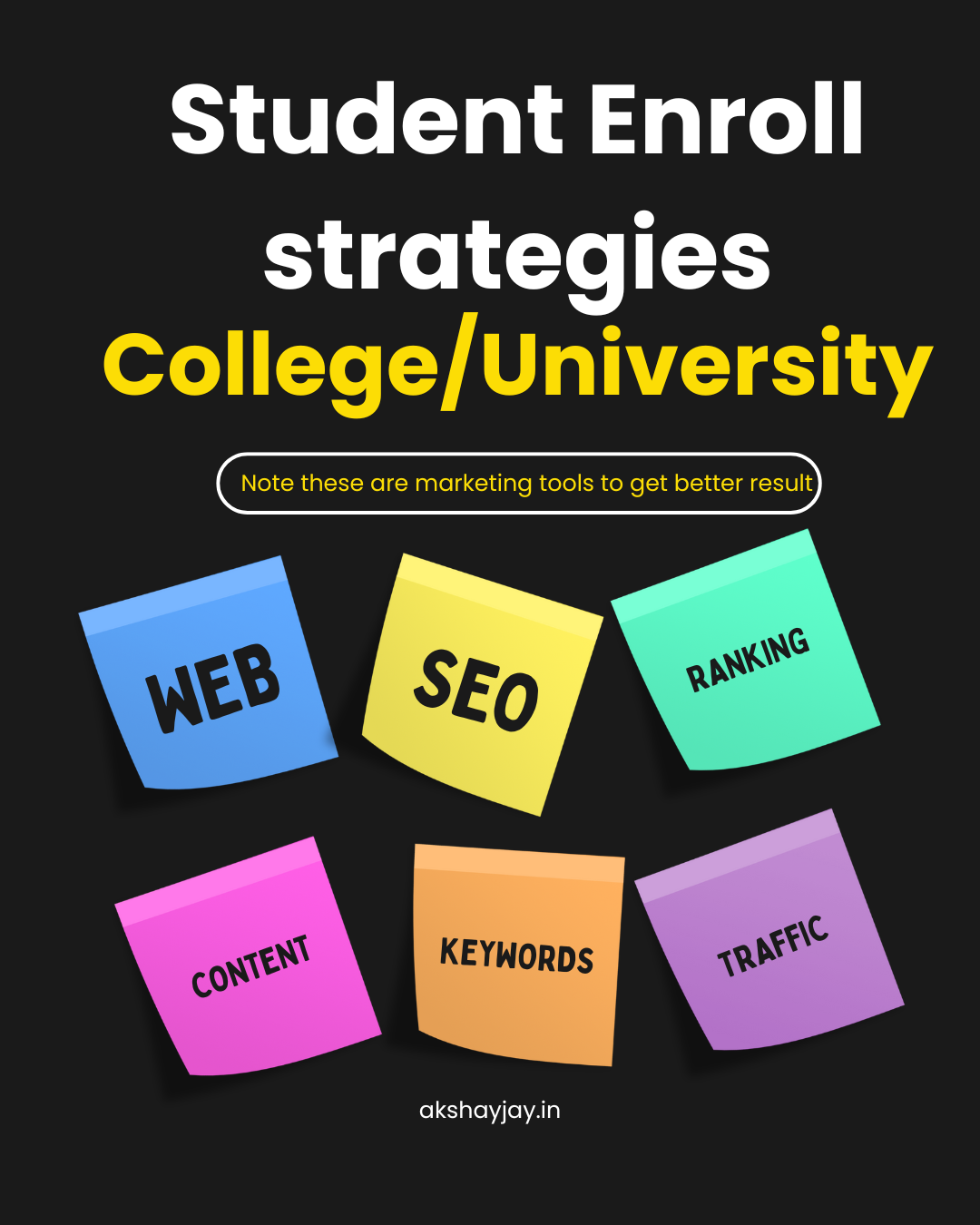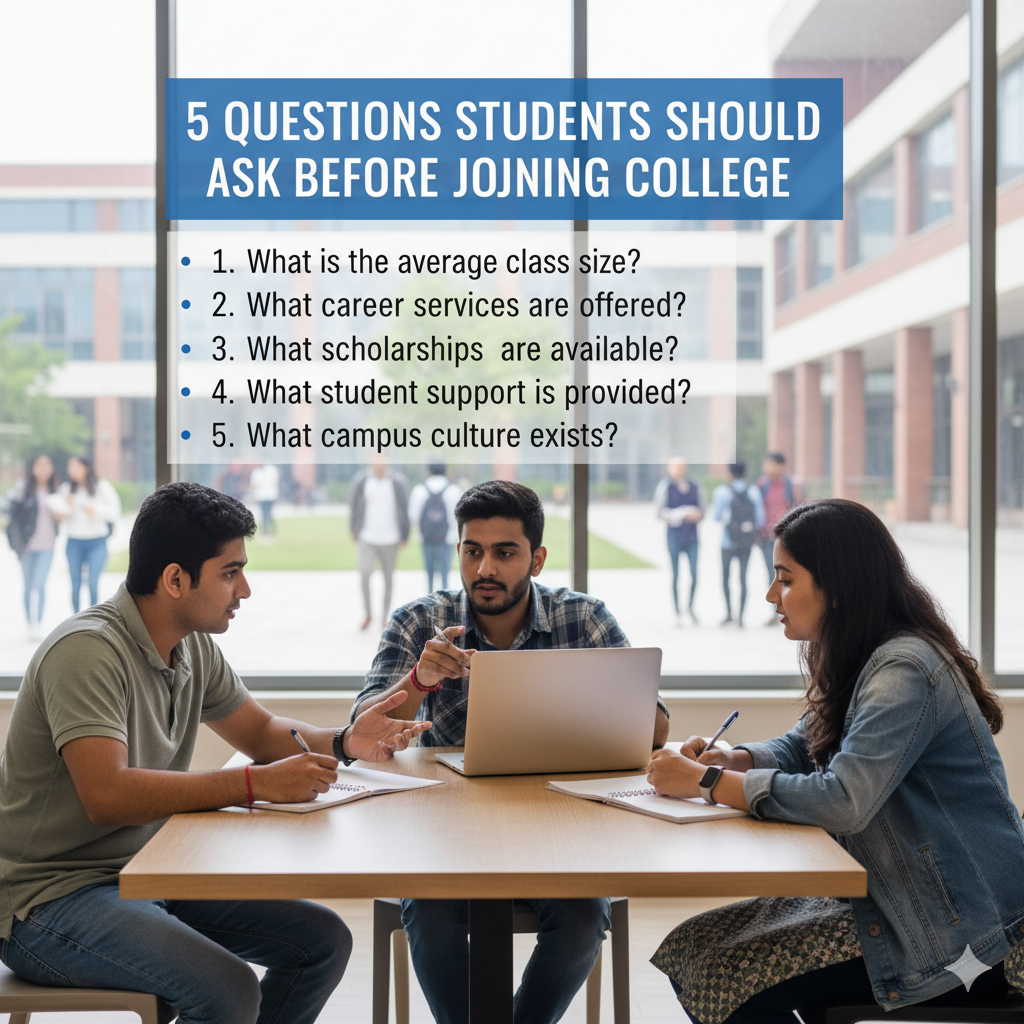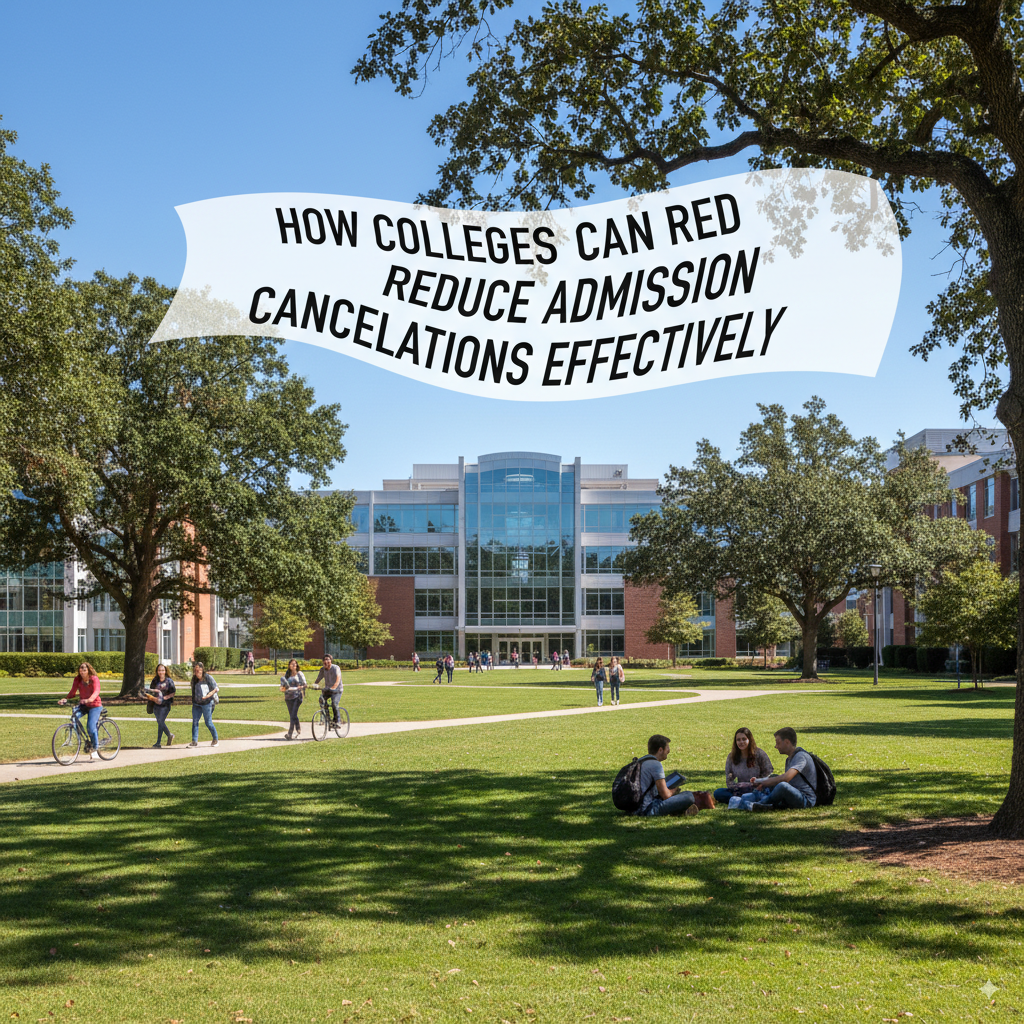Student enrollment is one of the most crucial aspects of a college’s growth and reputation. In today’s highly competitive education market, institutions must go beyond traditional marketing to attract, engage, and retain the right students. Implementing effective student enrollment strategies for colleges can make the difference between struggling with admissions and becoming a top choice for students and parents.
This guide will explore why enrollment strategies are important, what they include, and how to implement them effectively. Whether you’re part of an admissions team or leading college marketing initiatives, these proven tactics will help you stay ahead.

Why Student Enrollment Strategies for Colleges Matter
Colleges face intense competition, with thousands of students comparing programs, costs, and campus experiences online. A strong enrollment strategy ensures your college’s message stands out, attracts the right audience, and drives applications.
Well-planned enrollment strategies not only help fill seats but also enhance institutional branding, reputation, and long-term student success. This makes it easier to maintain a consistent student pipeline year after year.
What Student Enrollment Strategies for Colleges Include
Enrollment strategies go beyond simple marketing campaigns. They include digital visibility, data-driven decision-making, personalized outreach, strong academic positioning, and engaging campus culture. When executed correctly, these strategies create a seamless journey for prospective students—from awareness to application to enrollment.
How to Implement Student Enrollment Strategies for Colleges
Implementing these strategies requires a combination of digital marketing, technology integration, and student-focused engagement. Colleges must invest in SEO, social media, CRM systems, and virtual platforms while keeping personalization at the forefront. A structured plan ensures every interaction builds trust and converts leads into enrollments.
1. Digital Marketing for Enrollment Growth
Digital platforms are where most students research their future colleges. Running targeted Google Ads, social media campaigns, and retargeting ads ensures your college brand stays top of mind. A strong digital strategy also allows you to segment audiences and deliver tailored messages, increasing conversion rates.
Investing in social media content that showcases campus life, faculty expertise, and student achievements can make your college appear more approachable and trustworthy.
2. SEO for Colleges: The Foundation of Online Visibility
Search Engine Optimization (SEO) is essential for driving organic traffic to your college website. Students often start their research with search queries like “best colleges for B.Tech in Bangalore” or “top MBA programs near me.” Optimizing your website with relevant keywords, meta descriptions, and blog content increases your chances of ranking higher.
An SEO strategy ensures that your programs, facilities, and achievements appear prominently in search results, attracting students actively seeking admission.
3. Simplifying the Admission Process
A lengthy or complicated admission process can discourage students from applying. Colleges must focus on building user-friendly websites, easy-to-navigate application forms, and clear instructions. Adding chatbots and inquiry forms can also provide instant assistance to students, improving their overall experience.
A smooth, tech-enabled admission process builds trust and demonstrates that your institution values students’ time.
4. Building a Strong College Brand
Branding is more than a logo or tagline—it’s about building an emotional connection with students and parents. Colleges should highlight their success stories, academic excellence, campus culture, and placement records. Consistent branding across websites, brochures, and social media platforms creates a professional image that attracts quality students.
A strong brand identity helps students see your college as more than just an academic institution; it becomes a place where they envision their future.
5. Leveraging Social Media Engagement
Social media platforms are essential tools for connecting with Gen Z students. Colleges should create content that resonates with prospective students, such as reels, campus tours, testimonials, and career guidance videos. Engaging directly with followers via polls, Q&A sessions, and comments can create a strong sense of community even before students step on campus.
6. Personalized Communication for Better Conversions
Students want to feel valued, not like just another applicant. Personalized emails, WhatsApp campaigns, and direct phone calls from counselors help build relationships. CRM software allows colleges to track interactions, send reminders, and nurture leads throughout the enrollment journey.
This personal touch can make a major difference in a student’s decision to choose your college over competitors.
7. Leveraging Data Analytics for Smarter Decisions
Data-driven marketing is revolutionizing Student Enrollment Strategies for Colleges. Colleges can use analytics tools to track student behavior, measure campaign performance, and identify what drives applications. This allows for smarter budget allocation and continuous improvement of marketing strategies.
With real-time data, institutions can refine their outreach efforts, target the right demographics, and achieve higher conversion rates.
8. Building Trust Through Alumni Success Stories
Showcasing alumni achievements is a powerful way to attract new students. When prospective students see graduates succeeding in top companies or launching successful careers, they gain confidence in your institution’s ability to provide quality education.
Alumni testimonials, videos, and mentorship programs strengthen your college’s credibility and act as a form of word-of-mouth marketing.
9. Scholarships and Financial Aid as Enrollment Drivers
Many students make their college decisions based on affordability. Offering scholarships, financial aid packages, and flexible payment options can attract talented students who might otherwise look elsewhere.
Highlighting these opportunities forrr Student Enrollment Strategies for Colleges in your marketing campaigns can be a game-changer for families comparing tuition costs.
10. Hosting Virtual and In-Person Engagement Events
College fairs, webinars, open houses, and campus tours give students a real feel for your institution. Virtual engagement events allow you to reach a wider audience, while in-person visits help students connect emotionally with your campus environment.
Consistent event marketing builds excitement and helps students envision themselves as part of your college community.
Conclusion
Effective student enrollment strategies for colleges are no longer optional; they are essential for growth in today’s competitive education market. By leveraging SEO, social media, branding, personalization, and financial incentives, colleges can position themselves as top choices for aspiring students.
A well-executed strategy ensures that prospective students feel connected, valued, and confident in their decision to join your institution.
Is your college ready to implement winning student enrollment strategies? Start by optimizing your website, strengthening your digital presence, and showcasing your unique strengths. If you’re looking for expert help in creating an actionable enrollment plan, contact us today to take your admissions strategy to the next level!
FAQs About Student Enrollment Strategies for Colleges
Q1: What are the best student enrollment strategies for colleges?
The best strategies include a strong digital presence, targeted online advertising, personalized communication, SEO optimization, and data-driven decision-making. These methods ensure colleges attract the right students and stand out in a competitive market.
Q2: How can colleges increase student enrollment quickly?
To boost enrollment fast, colleges can launch digital ad campaigns, optimize their websites for conversions, simplify the application process, and run social media promotions. Hosting virtual tours and webinars can also create immediate engagement.
Q3: Why is personalization important in student enrollment strategies for colleges?
Personalized communication makes students feel valued and understood. When colleges use CRMs, emails, and customized content, they create a strong emotional connection, which increases the likelihood of students applying and enrolling.
Q4: How does SEO help in student enrollment strategies for colleges?
SEO ensures your college website appears at the top of search results when students look for programs, scholarships, or admissions information. Higher rankings bring in organic traffic, boosting inquiries and applications without heavy advertising costs. Digital Marketing in Student Enrollment Strategies for Colleges
Q5: What role does content marketing play in enrollment strategies?
Content marketing educates prospective students, showcases campus culture, and builds trust. Blogs, student testimonials, and program highlights can answer questions and make your college a top for Student Enrollment Strategies for Colleges





